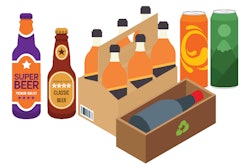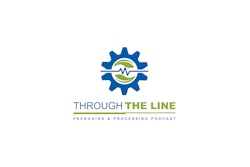One of the key aspects of the relationship between brand owner and CM/CP Partner is how they build their contractual relationship. Ways of working together can vary and depend on many factors. Below are some of the most common contractual constructs we’ve seen used in these arrangements.
Time and materials:
One of the most basic ways of working is to arrange everything based on time and material consumption. In these arrangements, brand owner customers may provide some materials, and sometimes even some labor, with the cost to the brand owner being any line time, materials, and/or labor provided to the effort by the CM/CP partner. Line time rate is often where labor, overhead and profit are captured. For pricing, this model is as transparent as it gets. Invoicing is based solely on the level of effort (time, materials, and people) provided by the CM/CP. Tying this pricing to a per case cost is the responsibility of the customer, not the Provider. Cost is usually set on a per day, per shift, or per hour basis. Materials are charged as consumed, or as opened for those that cannot be kept for any significant length of time once they are opened. This model is often useful for Development and Trial work, where defined formulas, processes and even specifications have not yet been developed or attained.
Full turnkey:
At the other end of the spectrum, we find the full turnkey, or “per case produced” option for contracting. In this model customers provide specifications and may also approve formulas and processes to be utilized. But the contracting portion comes down to the CM/CP and their customer agreeing on an invoice price per case (or another finished unit). The implication here is that the CM/CP procures materials, produces finished product, and sells cases to the customer. In most of these cases, the customer provides a forecast, and the producer is charged with having finished product available to meet the need. If forecasts are being reasonably met or adhered to in actual orders, the customer is usually billed upon shipment of finished goods. Key questions to address within the contract may include whether there will be opportunities to “square up” for cost changes in materials, or even transportation. Also important will be alignment to lead times for order changes and minimum order quantities.
Tolling only:
Another type of arrangement that is often employed by CM/CP providers and their customers is a tolling only type of arrangement. In these arrangements, the customer typically specifies finished product specs, and the provider confirms their ability to produce. This confirmation may be arrived at jointly with a customer during a developmental phase. However, once contracted production is begun, the customer schedules materials and production in a joint effort with provider. The customer has full financial responsibility for procuring the materials, and the two parties work together to develop satisfactory timing, etc. for production. Conversion of materials into finished cases yields ready-to-ship inventory, with billing for the tolling costs only usually coming immediately after completion of production runs. Key questions to include in contract details include how to react to changing volume demand, and fully understanding lead times required for order changes. Minimum run quantities are also a key factor in these arrangements.
Mixed Model:
Falling somewhere in between the models discussed so far is a mixed model where both parties may take ownership of certain matters based on the best way to leverage each party’s strengths. The customer may manage materials where they have expertise, experience, or leverage in procuring those materials. Likewise, the provider may manage materials that are either more common, or that they have expertise or experience sourcing. In these arrangements, tolling is still tolling. It costs what it costs for labor, overhead and profit. However, overall pricing in this model may come down to who procures what materials, and who and how are production run schedules set. Just like in other models, minimum run quantities can be important to recognize in a contract. Additional details may include how to manage shifts in material or transportation costs, and how to deal with holding any finished inventory since the cost basis of that inventory is in a shared accounting state until transfer of ownership has occurred.
If it seems to you that four types of contracting models fail to capture the many ways a sourcing contract can be built between a CM/CP Provider and their customer, well, we’d say you are right. These capture some of the major types of contracting that can be used, but various contract structures can also exist that fall in between some of the types provided here. For some, however, perhaps this article sparks some creative ideas that may lead to more harmonious and beneficial contract structures moving forward. If that happens, then we have met our goal with this particular posting! Best of luck!
























